Did you know that at least one-third of food is wasted, somewhere between the farm and the plate? This is not only inefficient—it’s immoral, as 1 in 10 people in the world are malnourished (suffering from hunger and food insecurity), including many who live in wealthy countries. Growing food and raising livestock also require lots of water (and energy), which should not be wasted. And food waste is also one of the major contributors to climate change. Most of the methane emissions from landfills are caused by food waste (AKA “organic waste”). Methane is one of the worst, most potent greenhouse gas pollutants. The sooner we can reduce methane emissions, the better off we will be.
Project Drawdown’s research has identified Reduced Food Waste as one of the highest impact climate solutions. (It’s ranked #1 or #4 in their list of solutions, depending on which global-heating timeline scenario you select.)
Reducing food waste is not only one of the best ways to help reduce greenhouse gas emissions; it’s also one of the easiest ways. And it shouldn’t cost you anything; in fact, reducing food waste should save you money. It’s the “low hanging fruit,” so to speak, of climate solutions.
 Of course, like most climate solutions, the biggest changes need to happen at a systemic level. Tons of food waste (or “food loss”) happens before it ever makes it to consumers, in the agricultural and food retail industries and along the whole supply chain. Often, a sizable percentage of produce is never even harvested in the fields where it’s grown, or it gets thrown out during processing or in restaurants, grocery stores, and cafeterias, sometimes due to its imperfect appearance or over-ripeness (or due to expiration dates, for packaged foods).
Of course, like most climate solutions, the biggest changes need to happen at a systemic level. Tons of food waste (or “food loss”) happens before it ever makes it to consumers, in the agricultural and food retail industries and along the whole supply chain. Often, a sizable percentage of produce is never even harvested in the fields where it’s grown, or it gets thrown out during processing or in restaurants, grocery stores, and cafeterias, sometimes due to its imperfect appearance or over-ripeness (or due to expiration dates, for packaged foods).
Farmers can learn about ways to recover more of their produce that is lost/wasted, through the resources and services of experts like Lisa K. Johnson. Some areas have gleaning groups that will come pick any excess crops and donate them directly to soup kitchens, food banks, or to people in need. Surplus can also be distributed for use as animal feed, compost, or industrial inputs, or even converted to energy using anaerobic digesters.
The rest of us can ask the owners or managers of our grocery stores (and local restaurants and school cafeterias) what they do with their excess food, and nicely ask them to donate their extra produce (before it goes bad)—and any packaged foods that are nearing their expiration dates—to local food pantries and/or overstock stores. In 2016, France passed a law requiring supermarkets to donate (rather than throw out) all unused food products. We should push for similar laws in our own country.
There are also numerous ways that each of us can help reduce (as well as reuse/repurpose or recycle/compost) our own food waste. Some are these strategies are very basic and may seem obvious, while others you might not have considered, or they might require a little more knowledge or effort:
- Don’t buy more perishable foods (i.e., produce, meat, dairy, fish, bread, or anything you need to refrigerate) than your household is likely to be able to eat before the items go bad. (For example, don’t buy produce in bulk quantities unless you know you can use or share all of it in time.) Avoiding buying too much—and using up what you have—may seem like no-brainers, but they do require some thought and planning. And it’s easier not to over-shop if you have a fresh-foods market a short distance from your home so you can go there more often. Many fruits and vegetables will stay fresh longer if you keep them in the refrigerator, and breads and many other foods can be stored in the freezer for later use. One way to help make sure you use up what you have is to place the items you need to eat first (including leftovers) in the most visible parts of your fridge where you can’t forget about them, rather than pushed back and hidden behind other items that will last longer. If you can tell that you have gotten more than you’re going to be able to use of something, give the surplus to friends/family who can definitely use it, or donate it to a local food bank/pantry (or soup kitchen or shelter) while it is still fresh enough to eat.
- It’s widely known now that the “Best By” dates on packaged foods are not expiration dates, and those dates can often be “taken with a grain of salt.” Here are some guidelines on how long various foods will last before they actually go bad. If you have packaged foods that you may not be able to use before they approach their expiration dates, donate those to a food pantry or the like before they expire.
- Don’t shy away from buying fruits and vegetables that are small or strangely shaped or slightly imperfect, or packaged foods in boxes/containers that are slightly dented or misshapen. Check out these companies that sell such foods at a discount: Imperfect Foods, Ugly Foods, and Misfits Market.
- Buy some of your food from overstock stores, like Grocery Outlet (or Big Lots), which help keep overstocked (or close-out) products from being thrown out. This is another great way to save money. You can often find some organic and healthy foods at Grocery Outlet.
- You can find many great ideas for ways to reuse/repurpose your food scraps and leftovers. Just do a web search for phrases like “cooking with food scraps,” “recipes reusing food scraps,” or “creative ways to use food scraps or leftovers” and you’ll see so many ingenious suggestions. (People who have lived in poverty or on a low income have learned some of these tricks by necessity.) Any remaining non-meat food scraps that you can’t use you can give to people who have chickens or other animals that would be happy to eat them (or else compost the unusable scraps: see the last item, below).
- When you eat at restaurants, if the restaurant offers huge portions of food that are more than you can/should eat, consider sharing those dishes. If you have leftovers, only have those put in a take-out container if you’re fairly certain that someone in your household will finish that food later, or if you know that you can give it to a homeless person right away. (Otherwise, you’re just adding unnecessary packaging waste to more food waste.)
- If you have a large garden or fruit or nut trees that produce more than your family can eat, offer the extra bounty to neighbors and friends, or post something on NextDoor.com or elsewhere to offer it to other people, inviting them to come pick/harvest and take it; or if you have a lot of surplus, you could set up a little farm stand/free food pantry box (or add it to a free library box), or contact a local gleaning group (if there’s no local group shown on the map at that link, do a web search to try to find ones in your area, or ask around on local social media groups). If you have a bunch of fallen, over-ripe, or wormy fruit from your fruit trees, you could offer that fruit to people who raise pigs or chickens or who have lots of deer or other wildlife on a rural property.
- Consider volunteering with a local gleaning group. Members of your group could contact local farms and orchards to see if they have excess crops they’d like your group to harvest and give to those in need.
- Composting options: 1) If your town has a curbside composting program that collects food waste, you should be able to put your remaining food waste into your curbside compost bin. (Just bear in mind that, in some areas, the compost gets transported to another county, which is not efficient in terms of transportation emissions.) Some cities or regions also have composting services that companies or households can hire to pick up their food scraps/waste. 2) You could collect and give your food waste to a neighbor or local farmer who composts on their land and uses the compost to improve their soil. 3) Or you can compost your food waste on your own property, if you have the space and an appropriate spot for that (where it won’t be likely to attract raccoons or rats or create a nuisance for neighbors). You can find zillions of resources and tips online about how to do home composting. One of the easiest ways to do it (without having to buy or build a compost bin) is referred to as “composting in place“: just digging a small hole right in your garden and putting your food waste in the hole, as it’s generated, and covering it up for it to decompose and improve your soil.
One of the other top climate solutions for reducing greenhouse gas emissions is also food-related: shifting to a more plant-based diet, i.e., eating less (or no) meat and dairy, which also happens to be good for our health—as well as the welfare of animals—and it can also save you money. Online, it’s easy to find many delicious recipes for meatless/vegetarian or dairy-free/vegan dishes, as well as vegetarian and vegan restaurants near you, and lots of information and resources on protein-rich, plant-based diets. And if you do sometimes eat meat or dairy foods, be sure to make an extra effort to use those up and not waste them, for the sake of the animals they came from, and also because meat and dairy production account for such an enormous amount of land use (and deforestation), as well as water use.
Resources for more information on food waste reduction:
- “The Global Benefits of Reducing Food Loss and Waste, and How to Do It,” by the World Resources Institute, April 2023
- “Methane from landfills is another climate emergency. Here’s how to fix it.” by Gina McCarthy, The Hill, November 2023
- “Tackling food waste,” Talking Climate newsletter, by Katherine Hayhoe, October 2023
- EPA’s Sustainable Management of Food site
- Food Waste Reduction Alliance, an industry-led initiative
(and their list of Resources, which you can search by category) - National Gleaning Project (includes a map of gleaning and food recovery organizations in the U.S.)
- Lisa K. Johnson, expert and consultant on food recovery: reducing food loss in the agriculture/food system
- Project Drawdown’s Reduced Food Waste solutions page
Also do a web search for organizations and companies in your city/county/state that focus on “food waste” or “food recovery” or “zero waste” to find out about efforts and opportunities in your region.
Related posts:
- Top 15 Most Effective Climate Solutions, per Project Drawdown
- Climate Actions for All of Us: Real answers to the question “What can I do about climate change?” [NEW: published April 2024]
- Sustainable Agriculture, Farming, Gardening, and Food-Related Resources

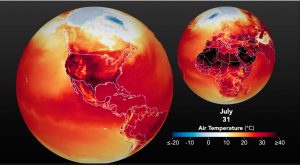 Globally, this has been the hottest summer on record (which has included the hottest day, hottest week, and hottest month ever recorded)—and it’s not just because of El Niño. The last decade (which included years with a heat-tempering La Niña) has also been the hottest decade ever recorded. Unlike the “heat waves” of the past, we are now experiencing more frequent “heat domes” with unprecedented, sweltering, record-shattering daytime and night-time temperatures, across large swaths of the planet, lingering for longer periods of time. The air, land, oceans and most other water bodies are now hotter than ever, with devastating and cascading consequences for all living things.
Globally, this has been the hottest summer on record (which has included the hottest day, hottest week, and hottest month ever recorded)—and it’s not just because of El Niño. The last decade (which included years with a heat-tempering La Niña) has also been the hottest decade ever recorded. Unlike the “heat waves” of the past, we are now experiencing more frequent “heat domes” with unprecedented, sweltering, record-shattering daytime and night-time temperatures, across large swaths of the planet, lingering for longer periods of time. The air, land, oceans and most other water bodies are now hotter than ever, with devastating and cascading consequences for all living things.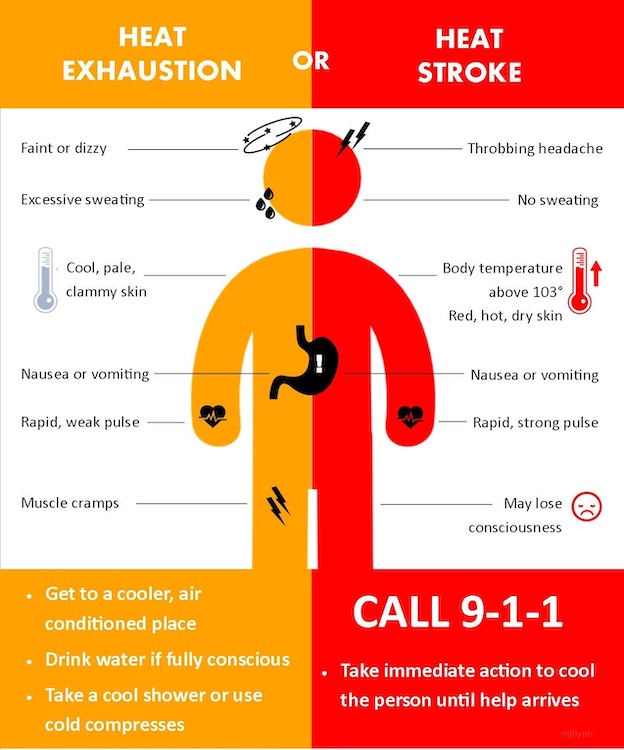
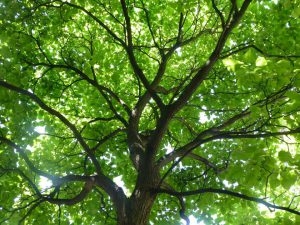




 Unfortunately, conventional tactics for killing mosquitoes are not always effective, and they tend to be toxic. Zika can harm the development of fetuses and can harm some adults; meanwhile, exposure to toxic insecticides can harm everyone (including fetuses). It doesn’t make sense for society to accept that we should have to suffer from the long-term effects of slow poisoning (e.g., chronic and fatal illnesses) from insecticides and pesticides when less-toxic, effective alternatives exist. We cannot just “fog” the world in a cloud of insecticides to try to avoid Zika or other mosquito-borne viruses. Furthermore, the use of insecticides often backfires and has unintended consequences, such as killing other insects and animals that eat mosquitoes.
Unfortunately, conventional tactics for killing mosquitoes are not always effective, and they tend to be toxic. Zika can harm the development of fetuses and can harm some adults; meanwhile, exposure to toxic insecticides can harm everyone (including fetuses). It doesn’t make sense for society to accept that we should have to suffer from the long-term effects of slow poisoning (e.g., chronic and fatal illnesses) from insecticides and pesticides when less-toxic, effective alternatives exist. We cannot just “fog” the world in a cloud of insecticides to try to avoid Zika or other mosquito-borne viruses. Furthermore, the use of insecticides often backfires and has unintended consequences, such as killing other insects and animals that eat mosquitoes.
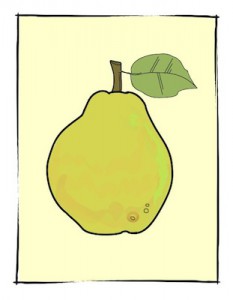 These resources are organized into the following general categories (though some are relevant to more than one category):
These resources are organized into the following general categories (though some are relevant to more than one category): 


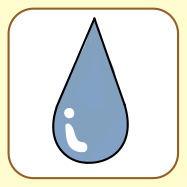
 Some conventional flea and tick treatments (including many of the topical, spot-on treatments that are applied directly onto pets’ skin, as well as flea collars, powders, and sprays, and even some ingestible products) contain highly toxic pesticides, some of which have been shown to cause a range of serious reactions in pets, from skin problems, vomiting, and excessive drooling to neurological problems (e.g., seizures or uncontrollable shaking), heart attacks, and death. So, tragically, some pesticides end up serving as pet-icides…
Some conventional flea and tick treatments (including many of the topical, spot-on treatments that are applied directly onto pets’ skin, as well as flea collars, powders, and sprays, and even some ingestible products) contain highly toxic pesticides, some of which have been shown to cause a range of serious reactions in pets, from skin problems, vomiting, and excessive drooling to neurological problems (e.g., seizures or uncontrollable shaking), heart attacks, and death. So, tragically, some pesticides end up serving as pet-icides…